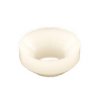First off, I'm not brewing beer... I am simply carbonating water for the family, but I'm new to this. Bought an old dual-tap kegerator off FB Marketplace.
- Corny keg with pin-locks
- 5 lb CO2 tank
- Regulator
The first keg, I could hear and see a leak in the lid. The CO2 emptied about the same time the keg did, so it lasted for 1 keg only. I replaced the keg and do not see or hear any leaks in the new one. But, the CO2 went empty after 3 days of force carbonating at 30 psi.
One caveat - when I first connected the CO2, the gas rushed out of the pressure relief valve at 30 psi, as it was stuck in the open position. I tried this 4 or 5 times, no more than 2 seconds each time before I just decided to replace the PRV. Could that 10 seconds of release emptied the tank that fast?
- Corny keg with pin-locks
- 5 lb CO2 tank
- Regulator
The first keg, I could hear and see a leak in the lid. The CO2 emptied about the same time the keg did, so it lasted for 1 keg only. I replaced the keg and do not see or hear any leaks in the new one. But, the CO2 went empty after 3 days of force carbonating at 30 psi.
One caveat - when I first connected the CO2, the gas rushed out of the pressure relief valve at 30 psi, as it was stuck in the open position. I tried this 4 or 5 times, no more than 2 seconds each time before I just decided to replace the PRV. Could that 10 seconds of release emptied the tank that fast?




